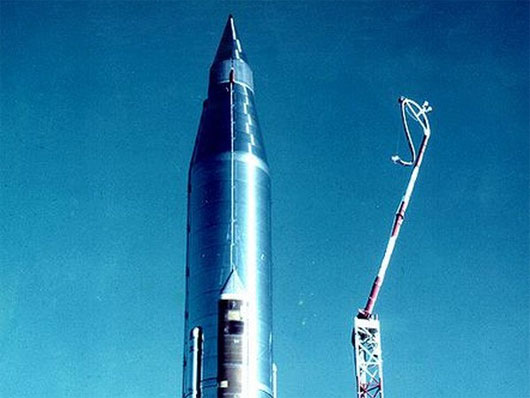Score - the world's first contact satellite
On December 18, 1958, Americans put on orbit equipment Score, passing President Dwight D. Eisenhower's Christmas message to people around the world. Score is considered to be the first contact satellite in the world, even though its contact is only one way.
Telecommunication satellites are a transceiver system that relay signals placed on space, can transmit voice, data transmission, Internet, radio and television signals and some other types of signals. Although it has only appeared for more than 5 decades, but the telecommunications satellite has developed rapidly in the world, opening a new era for development in all areas of science, life as well as telecommunications industry. information in particular.
The history of the world telecommunications satellite began on December 18, 1958, when the US successfully launched the Satellite satellite into orbit. Score is a communications satellite researched, manufactured, and weighed 68kg by the US military, using two tape recorders to store and transfer messages, 4 antennas to receive and broadcast signals.
After being successfully launched into orbit, Score transmitted the Christmas message of US President Dwight D. Eisenhower to the people of the world: 'This is the speech of the President of the United States. Through scientific advances, my voice has been transmitted to you through satellites traveling in the air. My message is simple: with a single meaning, I want to convey to you and humanity that Americans want peace and goodwill with everyone on Earth. "
However, the signal broadcast of President Eisenhower's message at that time was quite weak, only a few stations received this signal. Most Americans just listen to this message on the news program.

Atlas-B rocket carrying satellite Score.(Photo: wiki)
After 34 days of flying in space, on January 21, 1959, Score returned to Earth's atmosphere and caught fire.
Following the Score, a series of other telecommunications satellites were successfully launched, such as the ECHO reflecting satellite in 1960, Telstar and Relay broadband satellite satellites in 1962, Syncom's first geostationary satellite in 1963, satellites. The first commercial geographic location Intelsat-1 in 1965, Molnya communications satellite in 1965. These communication satellites initially proved to have more outstanding advantages on many applications.
One of the salient advantages is the availability of satellite information everywhere, so satellite information is especially useful for places where other technologies cannot provide. In addition satellite information also offers a wide range of global services.
Voice and video are the initial applications of satellite information systems. Until 1988, when transnational fiber optic systems were implemented, satellite information was chosen for connecting telephone network trunks. Since then, operators of telecommunication networks use satellite information systems to expand the infrastructure of the terrestrial network, first as backup systems or expand to connect to PSTN networks. to meet the requirements of global telecommunications service.
In addition to voice and video, weather forecasting is one of the industry's most important applications of the space industry.
After the 1990s, satellite satellite technology was used as a means to connect to the Internet through broadband data connections. This application is useful for those who access the Internet in remote areas and are unable to access using a wired broadband connection or dialup connection.
Telecommunication satellites become the only commercialized space technology industry - generating billions of dollars each year thanks to the revenue of products and services around it.
From the advantages that it brings, the satellite information system in the world has developed rapidly. So far there are about 280 commercial satellites in operation providing a wide range of telecommunications services in the international satellite information market. In Asia alone, there are about 20 satellite operators with 80 active satellites providing different types of information services.
Vietnam does not stand outside that common trend, on April 18, 2008, VINASAT-1, Vietnam's first telecom satellite, was launched into orbit from a launch site in the French province of overseas Guyane in South Vietnam. America. On May 16, 2012, Vinasat-2 was successfully launched on the launch of Kouro, Guyana.
In this race, the United States is rated one of the most powerful telecommunications satellites. Recently, on December 4, 2013, the US successfully launched the SES-8 telecommunications satellite, worth more than 100 million USD. The SES-8 will fly around Earth's orbit at a distance of 36,000km, providing telecom services to Asian countries such as India, China and Vietnam.
Looking back over the past 55 years, it can be seen that Score is considered a spiritual fulcrum for the American aerospace industry. It is also a sign that at that time, the United States was ready to explore the universe.
- Russia lost contact with the satellite launched to foreign countries
- Why is it so hard to make eye contact when chatting?
- Thousands of people lost contact due to a satellite incident
- Russia lost contact with the satellite because of a cable break due to road repair
- If a 'million dollar' satellite suddenly disappears, what will NASA do?
- Capture the world's largest satellite image missing
- Cooker cum generator Score-Stove
- Ecuador tried to save the satellite and hit the universe
- Dangerous harms can be encountered when wearing contact lenses
- Things to keep in mind when using contact lenses
- Russia put the strongest communication satellite into orbit with Proton-M missiles
- The world's largest earth observation satellite is missing
 Van Allen's belt and evidence that the Apollo 11 mission to the Moon was myth
Van Allen's belt and evidence that the Apollo 11 mission to the Moon was myth The levels of civilization in the universe (Kardashev scale)
The levels of civilization in the universe (Kardashev scale) Today Mars, the sun and the Earth are aligned
Today Mars, the sun and the Earth are aligned The Amazon owner announced a secret plan to build a space base for thousands of people
The Amazon owner announced a secret plan to build a space base for thousands of people